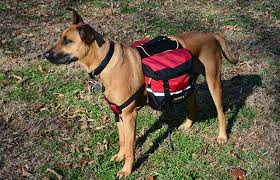
Often overlooked as part of a preparedness routine is how to best account for man’s best friend. So much thought goes into which particular gadgets and gizmos one needs for their own or other family member’s survival over an extended period of time and little goes into how people intend on caring for their pets while off the grid or in a SHTF situation.
During wildfires, tornados, and other natural disasters pets are often overlooked or forgotten about. Most shelters are not as friendly to dogs during disaster situations so it makes planning correctly that much more important. Having to evacuate your home is an incredibly stressful situation and having your dog along with you can not only provide much needed companionship but also can provide you with an additional layer of security and a way to stay warm beyond just making a fire.
If you have experience camping, hiking, or spending extended time outdoors with your dog, you’re already on the right track. There are a few things to prepare for, both in terms of things you should have prepared, but also specific conditioning of your dog when considering how to best evacuate with your dog.
What Should You Pack
Dog Food
- Standard food (1 week of food)
- Canned Tripe (2 cans – helps settle the stomach and is a nice treat)
- Dog Treats (to reward your dog after long hikes)
- Collapsible food and water bowls (more compact and less noisy than metal bowls, will need to be rinsed out regularly to avoid mold)
First Aid Items
- Flea and tick treatment
- Hydrogen Peroxide (to help induce vomiting if your dog eats something bad)
- Mushers Secret (to keep their paw pads healthy and non-painful)
- Benadryl (to help calm, or treat an allergic reaction)
- Tick Key (to remove ticks in the field)
- Medical Records (your pet’s medical history)
Gear
- Mountable Flashlight (to help find your dog in the dark or help them see where they are going, chose a flashlight like this one to easily mount to a collar or harness)
- Extra Leash (incase your primary one breaks – not a retractable leash!)
- Extra Harness (ideally with a handle and some lash points to mount gear to)
- Muzzle (never know if you might need this)
- Favorite Toy (for comfort)
- Poop bags (to keep a clean environment and keep bugs away)
How You Should Prepare Your Dog
Not all dogs are considered equal when figuring out the best way to prepare for an evacuation scenario with your dog. Little lap dogs are often much less resilient than the bigger, more established working dog breeds and will need a bit more TLC to care for in the field as well as some more conditioning work to get them ready.
Begin taking your dog(s) on longer and longer walks.
There might be a time where you need to quickly hike out of an area for an extended period of time. To ensure your dog does not get too tired, gradually take them on longer walks to increase their endurance.
Let your dog become familiar with carrying a load
Not all dogs are comfortable with a weighted pack carrying their own gear for miles of hiking. When you take your dogs on a walk, put a harness on and let them become familiar with carrying something on their back. This might not work for little dogs, which in that case you should make sure you have a specific way to carry your dog in your own pack safely.
Work on off leash training
Most dogs are not very well trained off leash – begin working on this before a disaster scenario occurs to make sure your dog will stay near you, and come when called, should you need to take them off leash for any amount of time. This can also help build confidence with the dog and yourself as you can rely on your pet following you instead of always having to drag her along on a leash.
Conclusion
It is incredibly important to make a plan for every member of your family when considering a bug out situation. Pets are an important part of your family and can make your journey much more manageable by providing companionship in a stressful situation.


Leave a reply